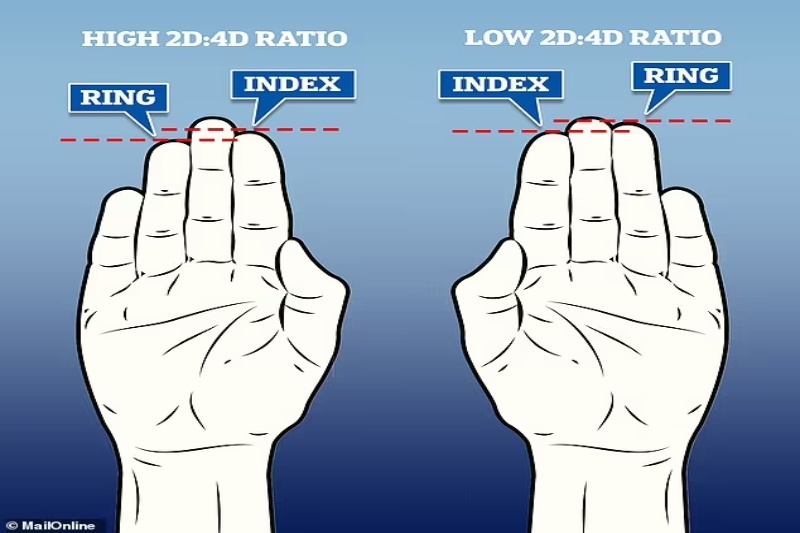Over the years, a number of performers have portrayed psychopaths in motion pictures such as American Psycho and The Joker. A few of them have won praise for portraying traits frequently linked with psychopaths, like manipulative tendencies, shallow charm, and a lack of empathy. According to scientists, psychopaths have an exaggerated sense of their own value and a tendency toward boredom, which encourages risk-taking behavior. However, without extensive investigation, it is extremely difficult for regular people to recognize psychopaths around them.
However, a recent study has shown that a psychopath may be easily recognized in the actual world by looking at their hands.
According to research from the Centre de Recherche Charles-Le Moyne in Quebec, psychopathic tendencies are more common in those with longer ring fingers than index fingers.
The results also point to a potential “biologically rooted” cause of psychopathy, according to the researchers.
In the study published in the, the researchers stated, “While individuals with such behaviors are socially highly problematic and incur issues, such behavior might be biologically rooted and understood as a fast life history strategy.”
Researchers examined 80 people’s hands for the study. 36 subjects were in good health, whereas 44 had a clinical diagnosis of either antisocial personality disorder (ASPD), amphetamine use disorder (AUD), or both.
Their right hands were meticulously scanned by the researchers, who then administered a battery of psychological tests, one of which was intended to screen for the Dark Triad personality traits of psychopathy, Machiavellianism, and narcissism.
Higher levels of psychopathic and antisocial tendencies were indicated by higher scores on these tests.
Researchers reported that higher scores on the Dark Triad personality tests and antisocial qualities were clearly correlated with a lower 2D (index finger) and 4D (ring finger) ratio.
In an interview with PsyPost, Serge Brand, the paper’s principal investigator, discussed the findings and clarified that they are highly correlated with elevated exposure to testosterone and reduced exposure to estrogen in the womb.
“The more an adult participant had signs of psychopathology, the more it appeared that this adult has been exposed to higher testosterone concentrations and lower estrogen concentrations during the prenatal period of life,” he said.





